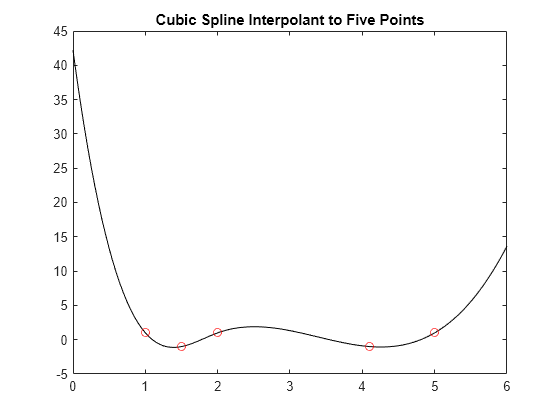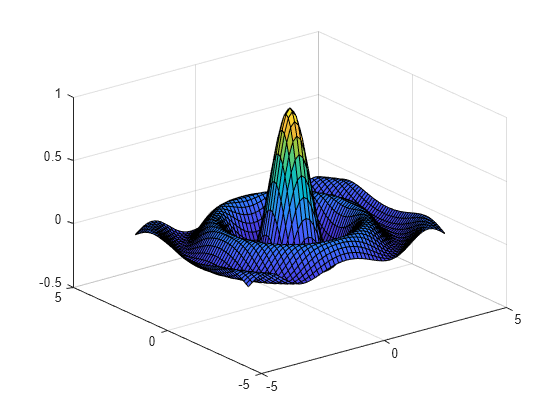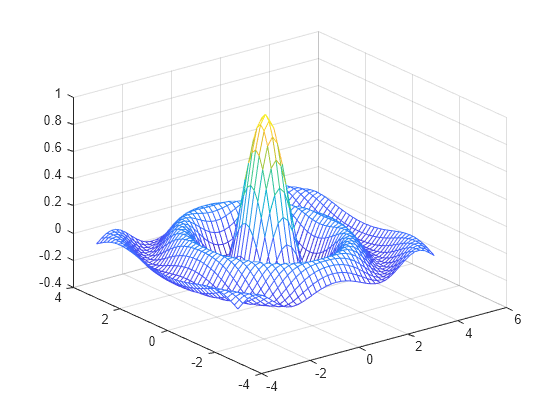csapi
Interpolación por splines cúbicos
Descripción
Nota
Encontrará un método para interpolar splines cúbicos más sencillo, pero menos flexible usando la app Curve Fitter o la función fit. Consulte Acerca de los splines de suavizado.
pp = csapi(x,y)x que toma los valores y(:,j) en x(j) para j=1:length(x). Los valores y(:,j) pueden ser escalares, vectores, matrices y arreglos n-dimensionales. La función calcula la media de los puntos de datos con el mismo sitio de datos y, a continuación, los ordena según su sitio. Con x como los sitios de datos ordenados resultantes, el spline s satisface las condiciones de contorno not-a-knot, como
donde D3s es la tercera derivada de s.
Si x es un arreglo de celdas de secuencias x1, ..., xm de longitudes n1, ..., nm, y es un arreglo de tamaño [n1,...,nm] (o de tamaño [d,n1,...,nm] si la interpolación es de valor d). En ese caso, pp es el formato ppform de una interpolación por splines cúbicos de m s para esos datos. En particular,
con y .
Para realizar operaciones en este spline cúbico de interpolación, como evaluación, diferenciación y representación, utilice la estructura pp. Para obtener más información, consulte las funciones fnval, fnder y fnplt.
values = csapi(x,y,xx)xx. Esta sintaxis es la misma que la de fnval(csapi(x,y),xx).
Este comando es básicamente la función de MATLAB® spline, que, a su vez, es una versión reducida de la rutina CUBSPL de Fortran en PGS, excepto porque csapi (y ahora también spline) acepta datos de valor vectorial y puede gestionar datos de malla.
Ejemplos
Argumentos de entrada
Argumentos de salida
Algoritmos
csapi es una implementación de la rutina CUBSPL de Fortran en PGS.
El sistema lineal tridiagonal relevante se construye y resuelve usando la funcionalidad de matrices dispersas de MATLAB.
El algoritmo también utiliza la condición de contorno not-a-knot, forzando a coincidir al primer y al segundo tramo polinomial de la interpolación, así como al penúltimo y al último tramo polinomial.
Historial de versiones
Introducido en R2006b




